Day 7: Pisa to Florence: Up the Arno
I gathered up my stuff, checked out, and headed through the morning cool toward the train station for another trip. Pisa was surprisingly busy at 9 in the morning. The students were out, discussing things in the street over a cigarette (Italians smoke even more than the English) and slipping to class (I passed by the English and Letters department, and Italian kids were just as nerdy as American ones).
The train ride was quick and pretty, climbing up into the mountains of central Italy. One could see the regions where economic growth was spreading over the natural beauty and the other regions where economic growth certainly wasn't there.
Immediately upon leaving the station in Florence, one is struck with the wonders built in the city, such as Santa Maria Novella.

One is also struck with the crowds of tourists (Florence was even more packed than Rome), able-bodied beggars (go get a job, slackers!), and the funny smell (I'm not even sure what it was). At least there wasn't so much graffiti. Anyway, I waltzed along, following the map till I came to the hostel where I would be staying. It was a strange little hotel where you entered from the street and walked up three flights of stairs to get to the main reception. The rooms were simple, but nice.
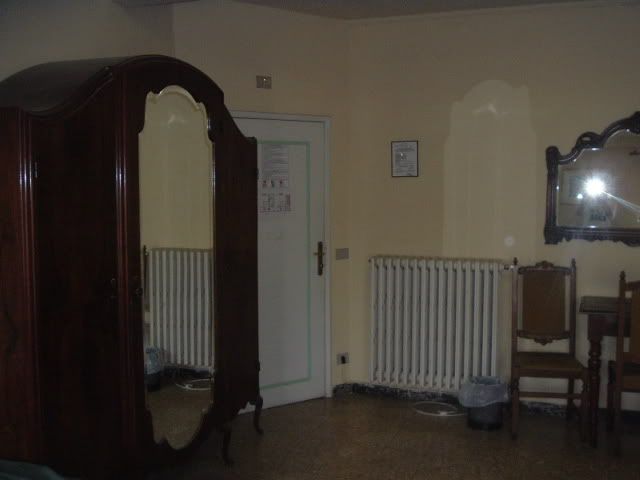
There were five of us in one room, me, three other Americans, and an Asian guy who was studying in England.
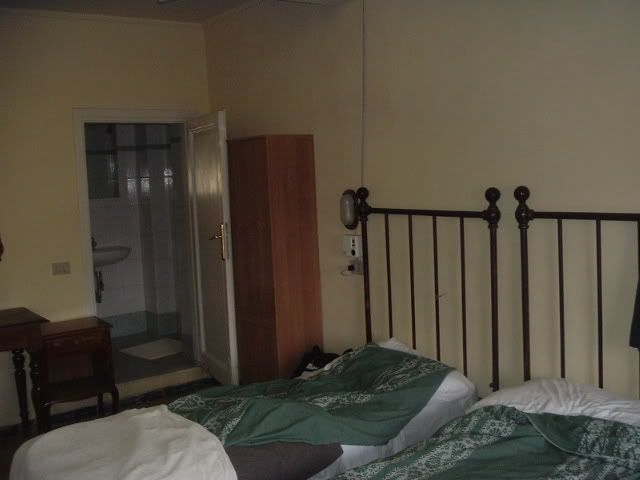
Shedding the weight of my bags, I ventured out into the streets again, first to the famous Duomo (it's very pretty).
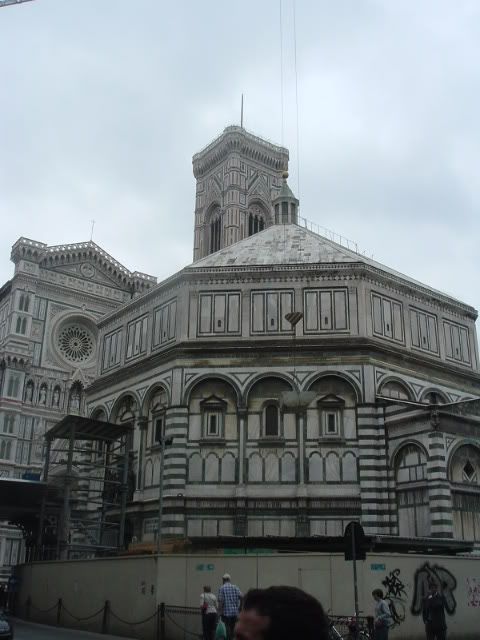
And the even more famous baptistry doors (well, famous among artsy and nerdy people, I guess).
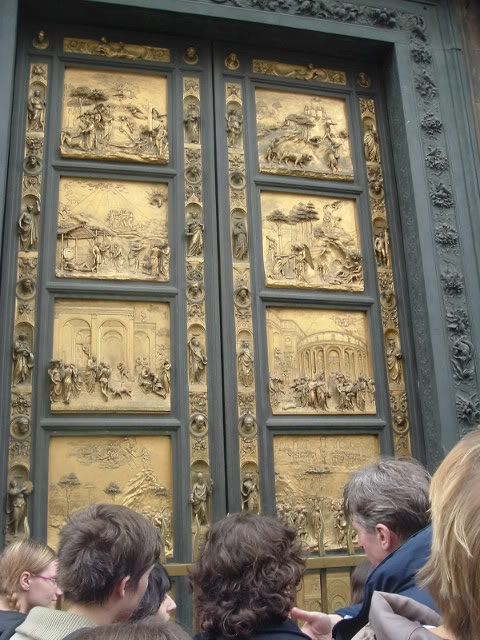
The lines for it were incredible, and I decided to head to greener pastures. After being accosted by a volunteer lady trying to get money and/or time out of me (five hours, she assured me, would be enough). I told her I only had two days to see all of Florence as it was, then she asked me where I was from, and then waving me away dismissively after I replied America. Weirded out.
Anywho, I finally fought my way through the crowds to Piazza della Signoria, which is the plaza in front of the old de Medici palace (). It had a big statue of the first big de Medici, Cosimo I.
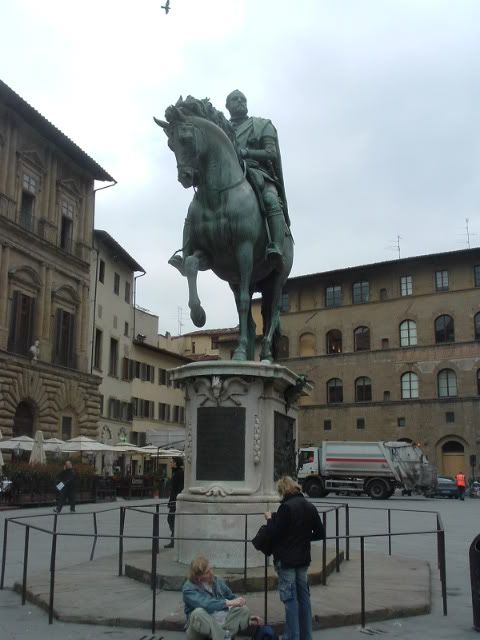
It also had tons of copies of the statues tucked away inside the museum.
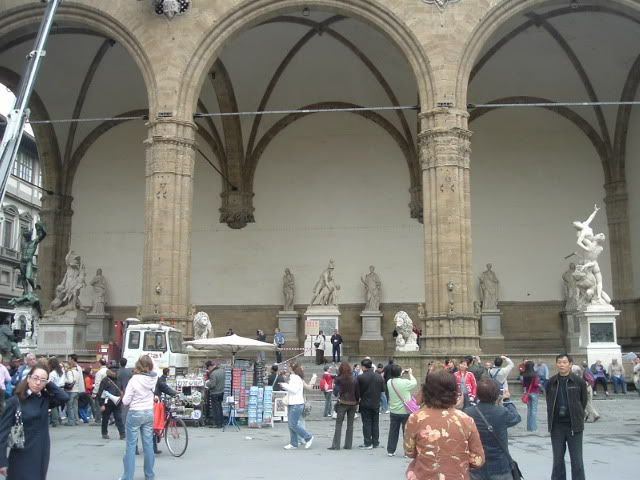
And a big ole Neptune fountain.
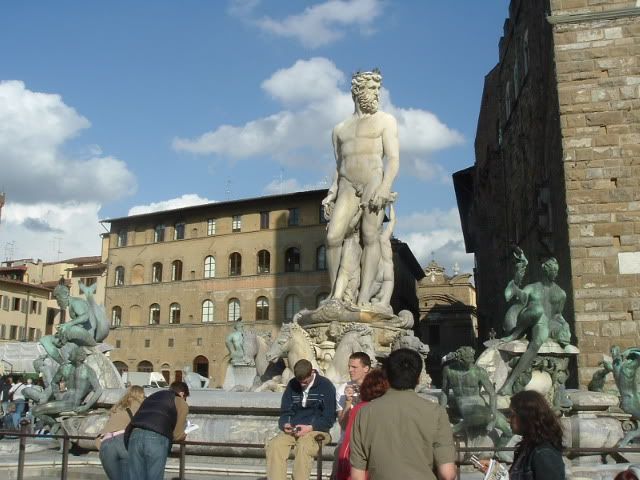
The museum's called the Uffuzi, where the de Medicis lived.
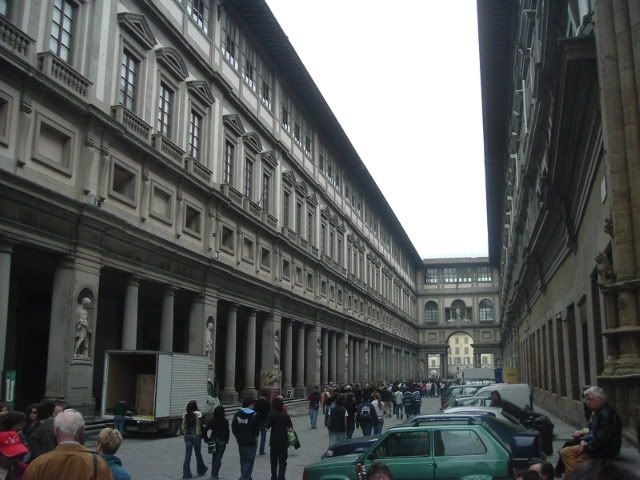
There's also a construction called the Vasari Corridor, which the de Medicis used to walk between the old palace and the new one (one for business, one for pleasure) so that they didn't have to go down to the street. I mean, the street has commoners in it. Ugh.

I sneaked away from the main bulk of the crowds and went out to the quieter Santa Croche. It was started by monks, who wanted a cathedral without glamor, so that it matched the oath of poverty. Then Florence started growing into a big town (much at Pisa's loss), and the family elders decided it was time for a cathedral to match the city's greatness. The end result is a fascinating mixture of the plain and the magnificent, much of which they're busy renovating with lots of scaffolding everywhere.
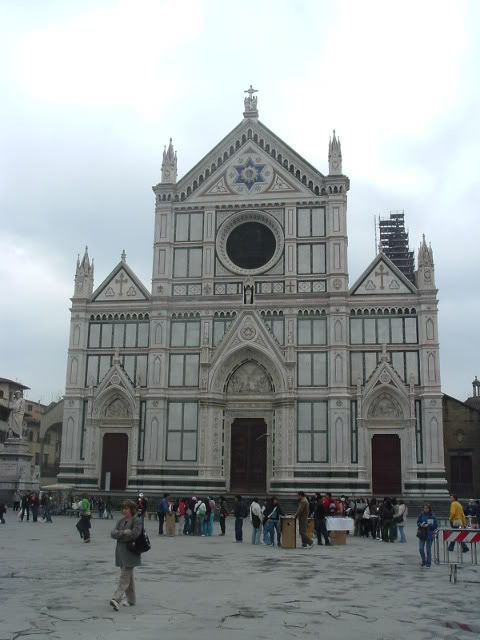
The piazza in front has buildings with outdoor frescoes. Very alpine-esque.

Here's some proof that I was actually there (although it could just be an edited picture, heh).
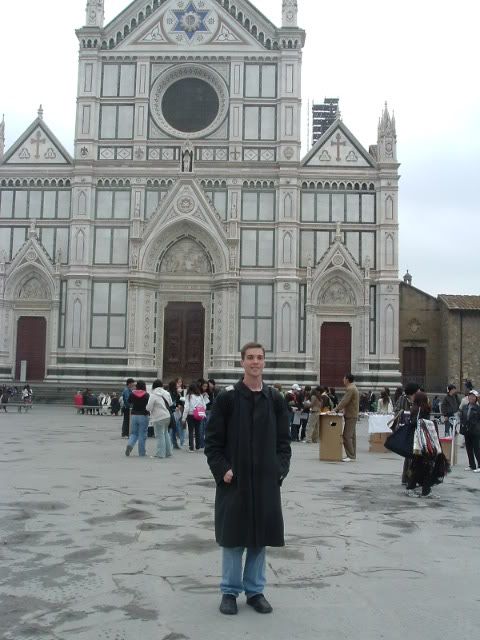
As Florentine greatness increased, the cathedral became a burial ground for famous people from Florence, then Italy, and even the world. It has tombs for people such as Galileo.

And Michelangelo (the grieving statues are Painting, Architecture, and Sculpture.
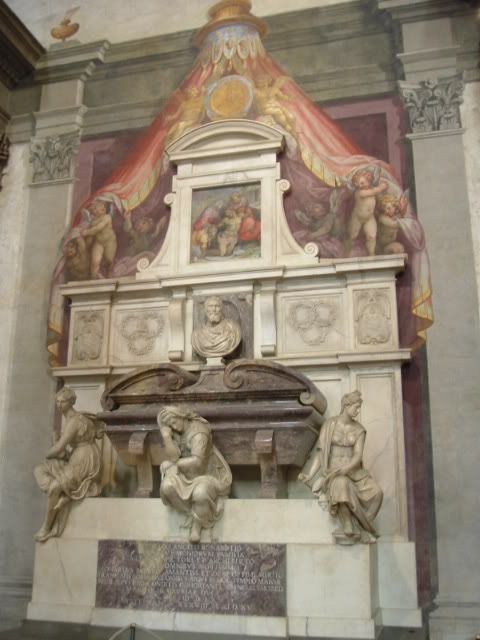
Dante Alighieri (all the statues of him make him look somber almost to the point of anger)

And even Marconi, the guy who "invented" the radio! (He stole some of Tesla's ideas, but, hey, Marconi actually got the commercial aspects going.)

The cathedral also had interesting little features like this pulpit where the steps leading up are built into the support column in order to limit the amount of floorspace given to the builder's family.
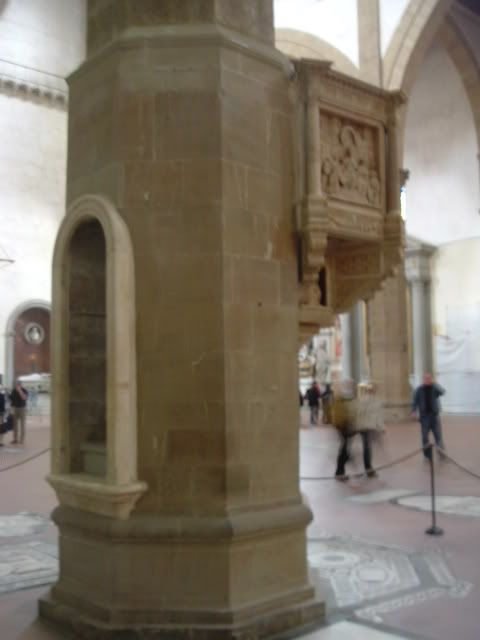
And there's this statue, which is, in a way, the Statue of Liberty's older sister (as the artist used it for inspiration).
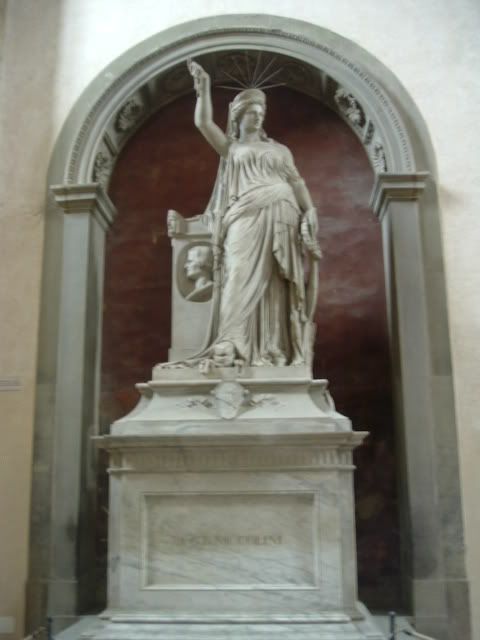
And another marble carved to look like cloth in this Lady of the Milk. I can't get over how neat that looks.

After spending hours perusing all of the beauties of the Santa Croche (I even got one of those audio tours, and I'm really glad I did. It was very entertaining), I headed back into the streets to see what else Florence offered. Almost immediately I saw the library, or at least one corner of it. Now that's a handsome building. I wouldn't mind living there.

I crossed the Arno, pausing to look at the overwhelmingly European landscape, with misty mountains in the background.
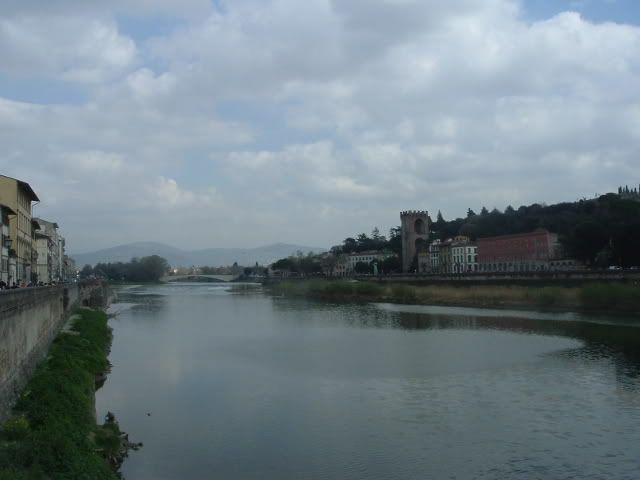
It seemed the farther I went, the fewer tourists I had to push through, so I hiked up to Piazzale Michelangelo, which is a park built atop a hill across the river, giving it a great lookout over the city. I imagined most people wouldn't do it, but those of us that did were very much rewarded. Here you can see the Duomo, Uffizi, Arno River, and the Ponte Vecchio bridge.
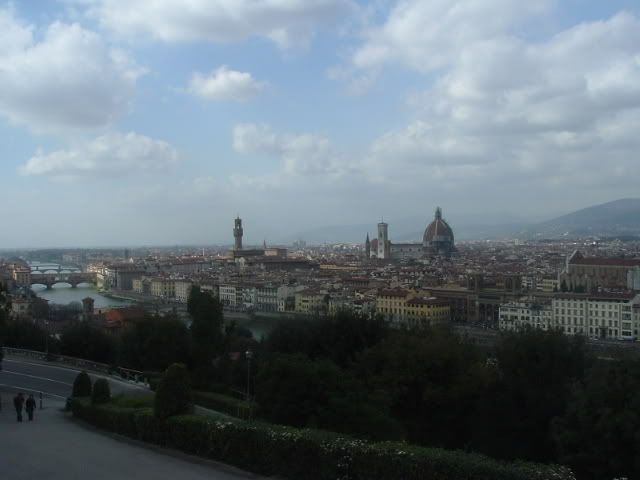
I got my picture taken by some Chinese girls who were on holiday.
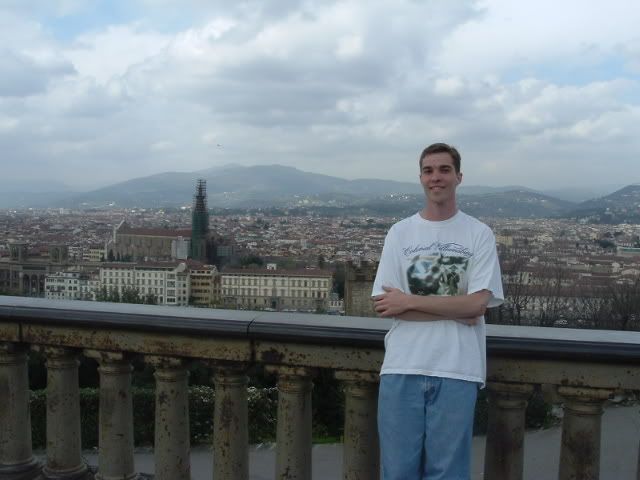
Then I turned around to check out the park itself, which had about the fifteenth David statue I had seen that day. They really like David in Florence.
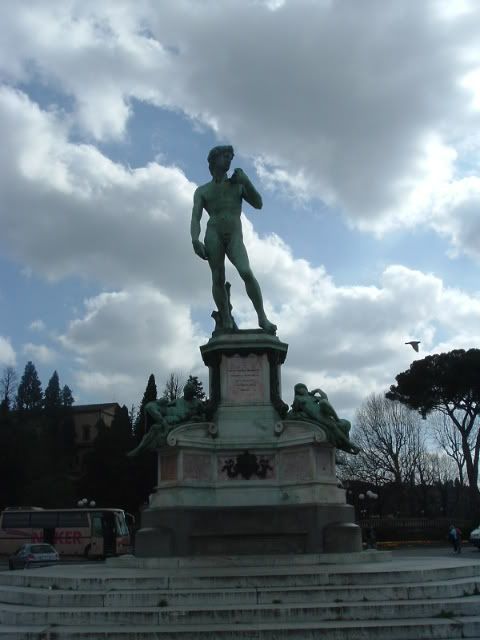
Pausing to get my daily gelato (Mmm), I walked the winding paths back down the hill toward the river. The flowers were blooming.
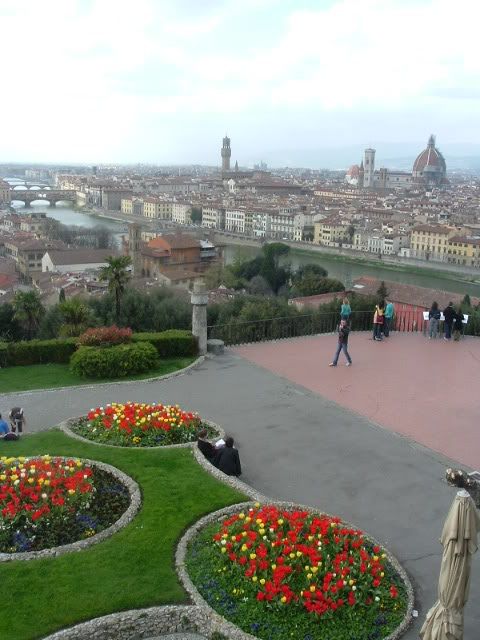
And the clouds parted, filling the city below with light.
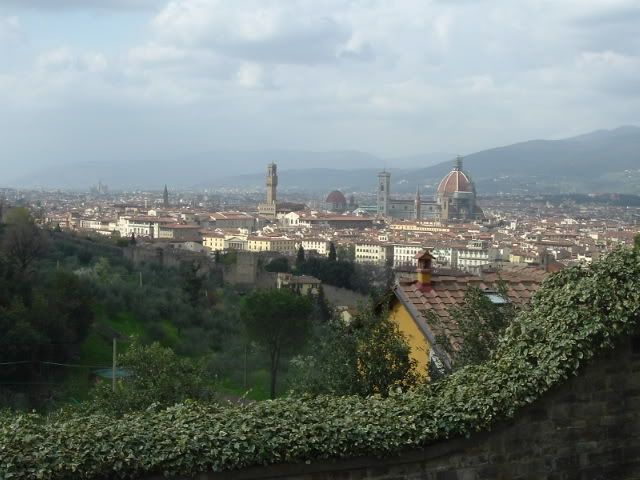
Most amazing was just how green the city became as soon as one was away from the central hubbub.

There was a church on top of the hill called San Miniato al Monte. A gang of Italian students had just toured it and were playing around on the steps outside.
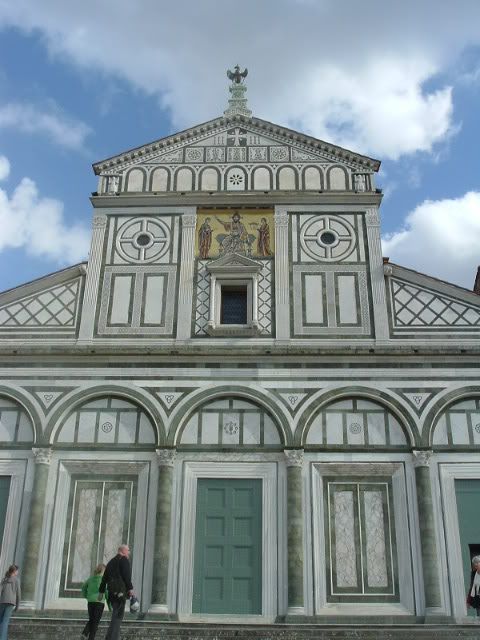
Inside, the church was solemn, quiet, and filled with ancient masterworks.
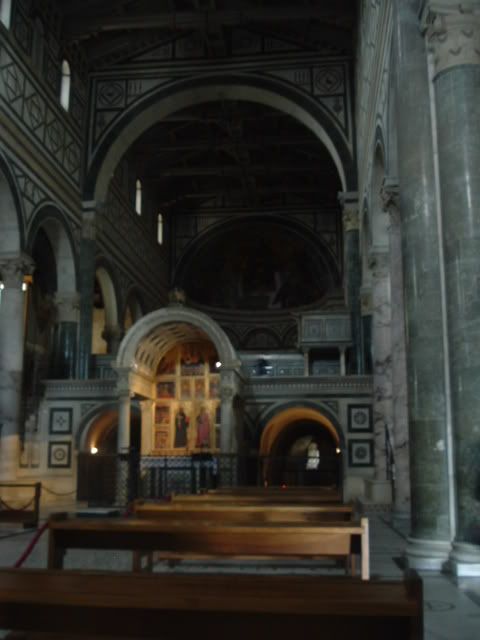
From there, I strolled back to the Arno and took a look at the Uffizi's facade from across the river. Facades rock.
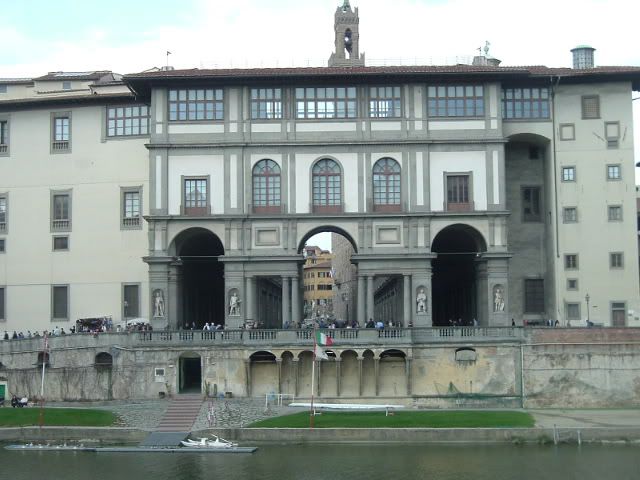
Then I was back in touristy crowds, so I headed away from the shops and saw the Piazza de Pitti, which is the plaza in front of the de Medicis' newer palace.
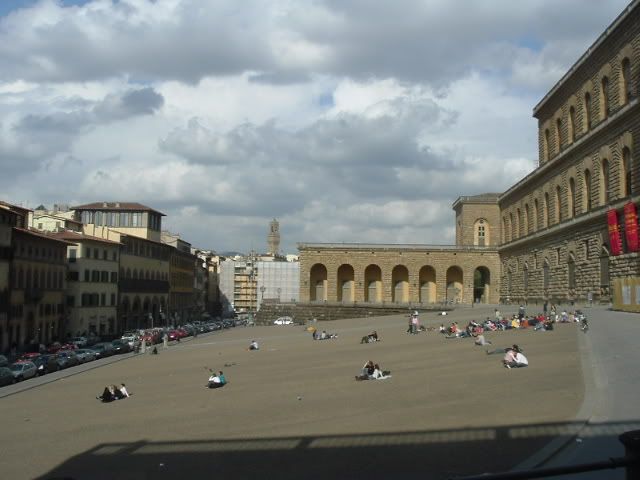
The late afternoon sun had heated the stones, and it felt like a good place to lounge around.
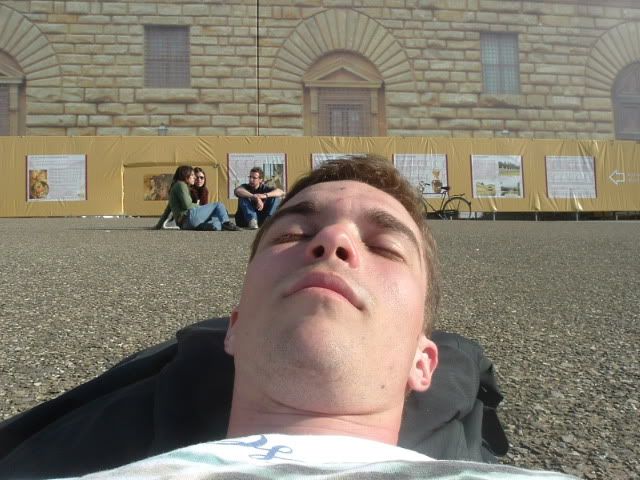
All this Italian sun was giving me quite the sunburn. Strangely, I didn't care, and the tingling sensation of fried skin kind of felt nice. Except my sunburned ears; that stunk.
So, it was getting darker and I was getting hungry, so I headed across the Arno on the Ponte Vecchio. There were designer-suit-clad Firenze polizia keeping an eye out for trouble. Actually, since they're city police, I think that makes them "vigili urbani", but my Italian's terrible.
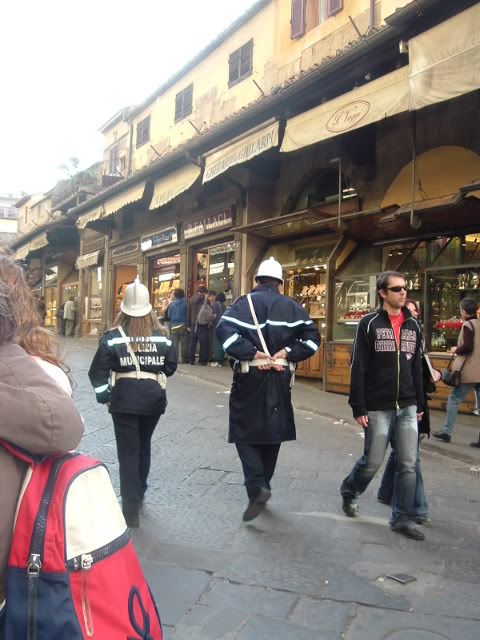
I spent the evening finding an internet cafe to empty my camera's data card and having dinner purchased from the local supermercato (Italian cheese is expensive and not as good as British). I even broke down and got some souvenirs: a bowler and a top hat for my hat collection. The bowler is one of England's trademarks, yet I end up getting one in Italy. What a world.
Day 8: Surpise, it's Culture Week
I awoke early (though not as early as the other Americans, who were stomping around at I-don't-even-know o'clock in the morning) and wandered aimlessly out into the Florentine streets. Everything was so ridiculously expensive that I wasn't quite sure where to start. I went from San Lorenzo to the Cappelle Medicee, where the de Medicis are buried in an overwhelming chapel. From there it was up to Santa Maria Novella, where I got my daily gelato fix early. Then I sat on the steps and pondered whether I was getting addicted to this Italian super ice cream.
While I was there, a group of American art students gathered, and their teacher gave a short history of the church. She ended by saying they were ready to go inside and asked around just to make sure they had enough money. Then she added, "Well, it's culture week, so all the state museums are free, but this is..."
My ears perked at "free". I hurriedly grabbed my list of museums and checked which ones were national museums, then I was off to see how much culture I could squeeze in. My first stop was the Bargello, which was the former city prison, now yet another art-filled wonder.
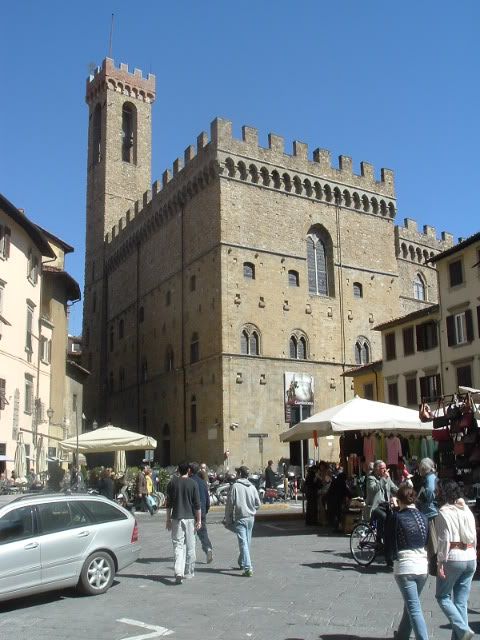
It had a cool staircase inside. (Priceless artifacts from across the centuries, and I look at the stairs. Huh.)
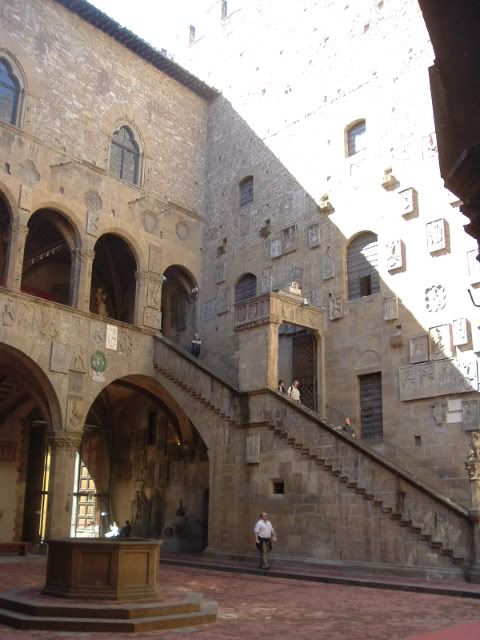
Well, I got the art in, too. Here's the famous Mercury leaping into flight.
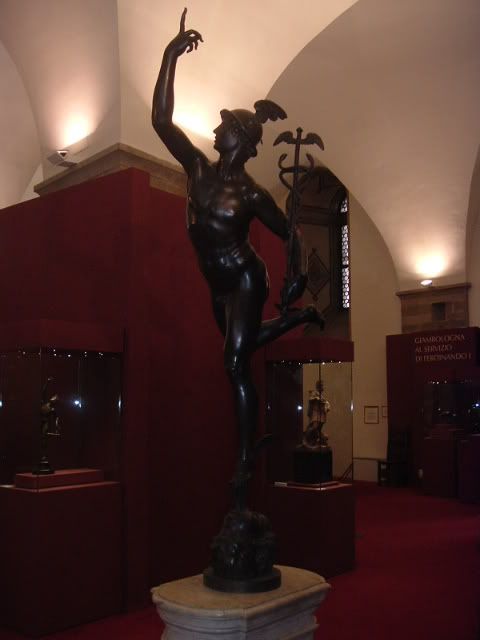
And this was another David done by Donatello. Frankly, I like this one a lot better than his other. I even like it better than Michelangelo's, even if it isn't a colossus.
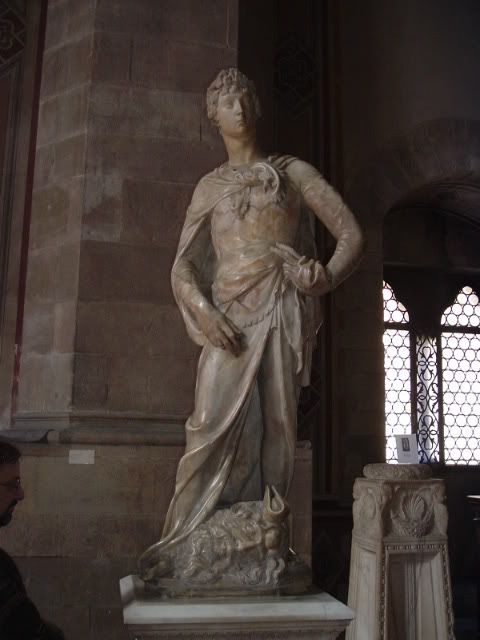
They had more than statues, such as glazed terracotta and an armory with a moorish ivory-inlay saddle.
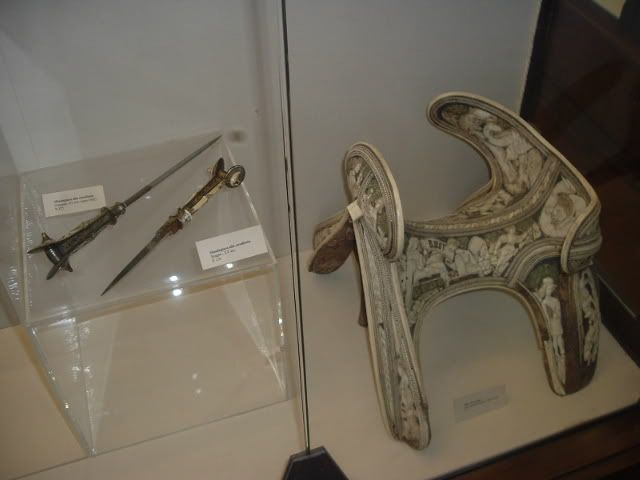
With much of the day gone already, I skitted off to the next sight I wanted to see, the famous copper-domed Tempio Israelitico. It was built in the 1880s after the ghetto laws were finally done away. I did have to pay for it, but I think it was definitely worth it.
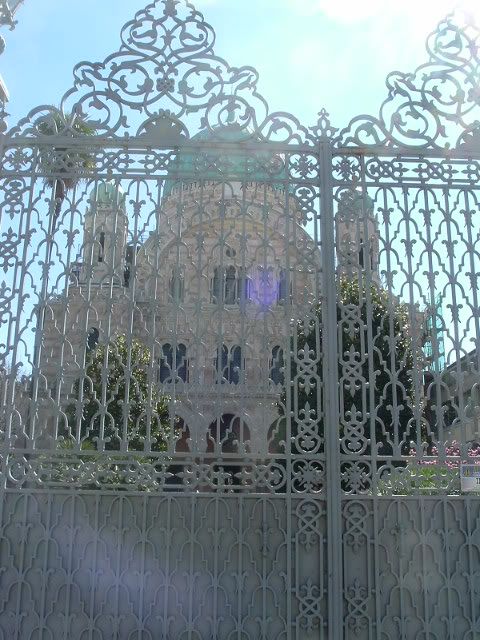
Then I walked the streets toward the Palazzo Pitti, passing strange things along the way such as Dante's church (where he met Beatrice) and an actor reciting Dante's Inferno.
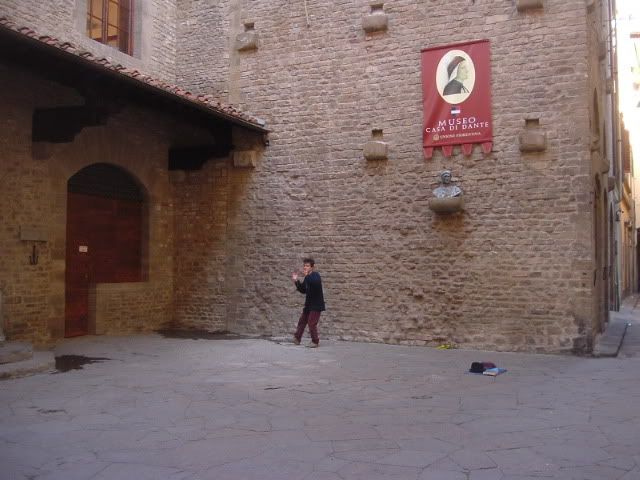
And there was a shop that is supposed to have the best ice cream in the world. I didn't try it as it was overwhelmingly expensive for a tiny cup (no cones). Besides, I have no time for pretentious foodstuffs. Bah.
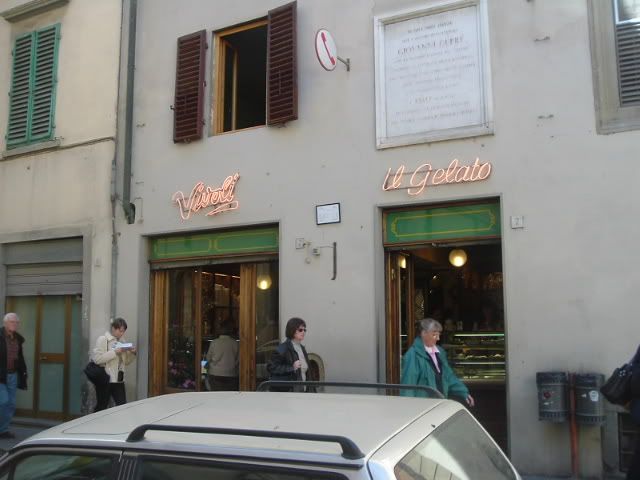
Then there was the statue of the architect of the Duomo, eternally gazing up at his creation.

I must admit, he does good work.
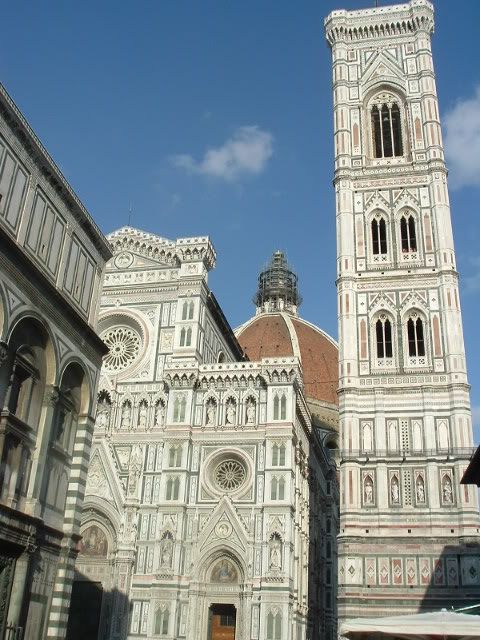
And a "real" American bar.

I crossed the Arno again, this time pausing to get a shot of another architect immortalized with his creation (the Ponte Vecchio bridge, in this case). I like the idea of architects being directly attributed with their work. It's a good spur to make sure they do their best.
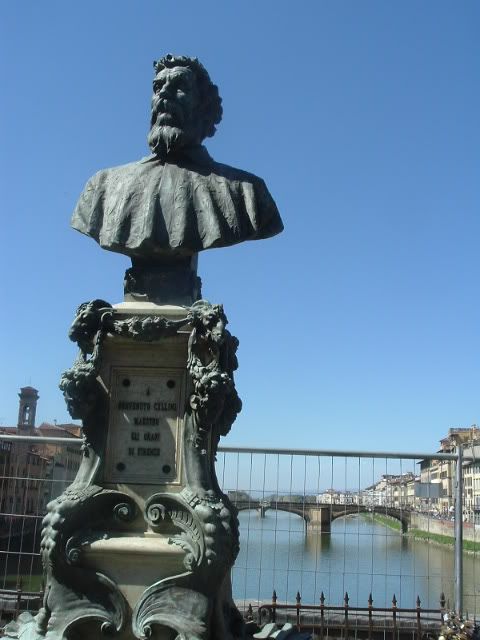
There was a line at the palazzo, as there was everywhere, but it was free and worth the time. Inside, the rooms were on par with Versailles (though there were much, much fewer of them; even the de Medicis can't keep up with Louis XIV). The view out the windows wasn't too shabby, either.
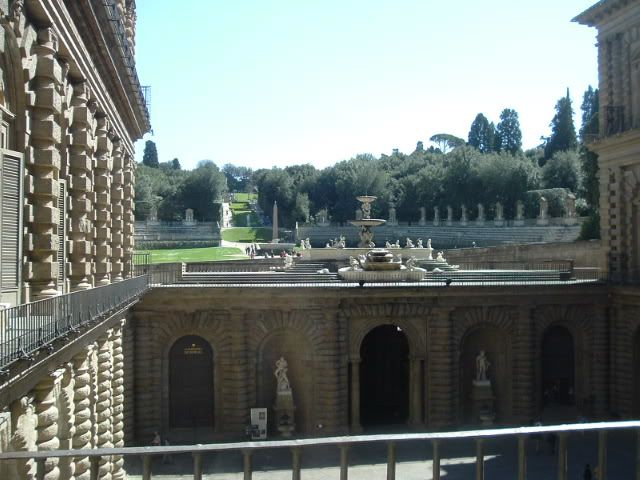
One room had a clever 19th century statue of a young Michelangelo. He's so cute with his little chisel.
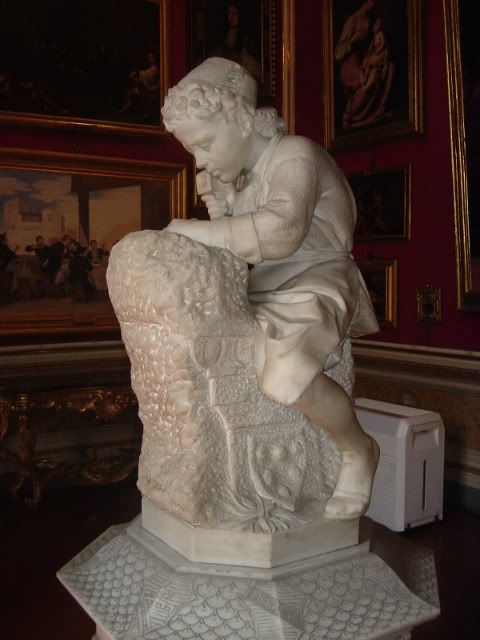
They also had Napoleon's Bathroom, which was built for him during his conquest of Italy. But, he never used it as he was gone before it was finished. Speaking of Napoleon, did you know his family originated in Tuscany? Neither did I, till then.
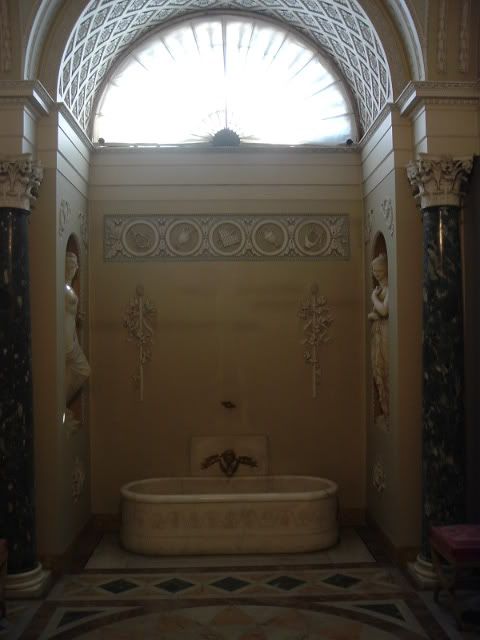
The rooms were color-coded (though I'm not totally sure for what reason), and the palace also housed museums of modern art, silverware, and ancient myth and romance (did you know Cupid had a younger brother?). The best painting of all had to be the one of the gathering of the gods, though. It's like a family portrait, very bright and clear.
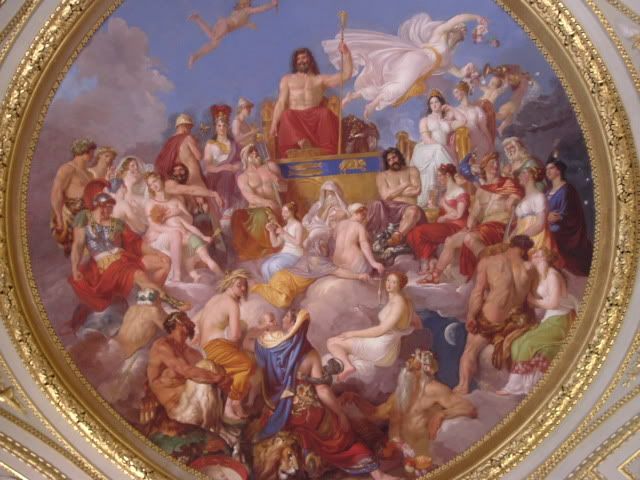
Speaking of cupid, here's the mischevious little guy.
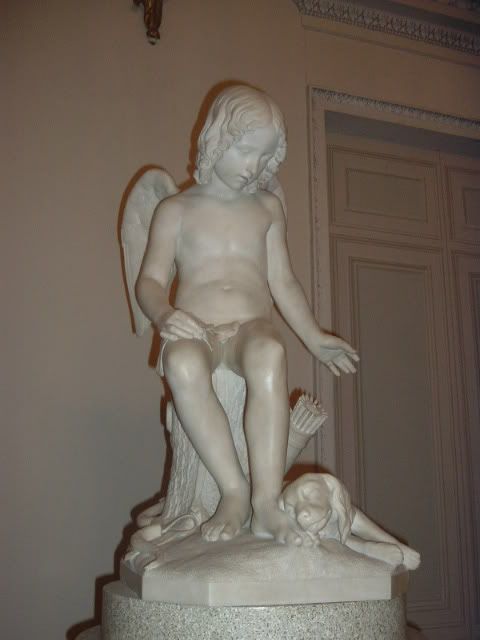
Outside the house, they had tons and tons of fountains. Italians and I agree at least on one thing: Fountains are neato.
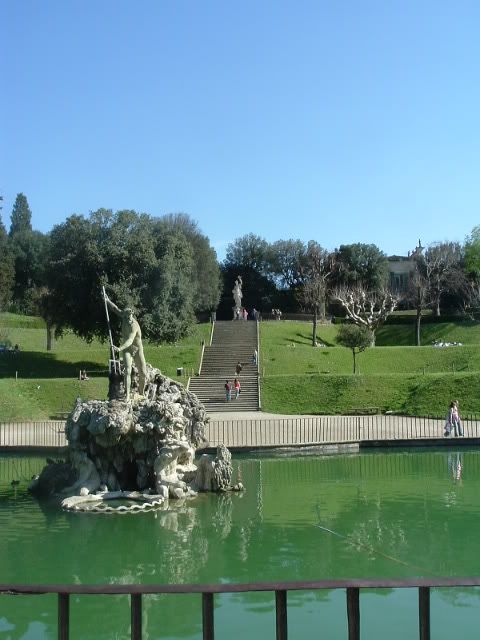
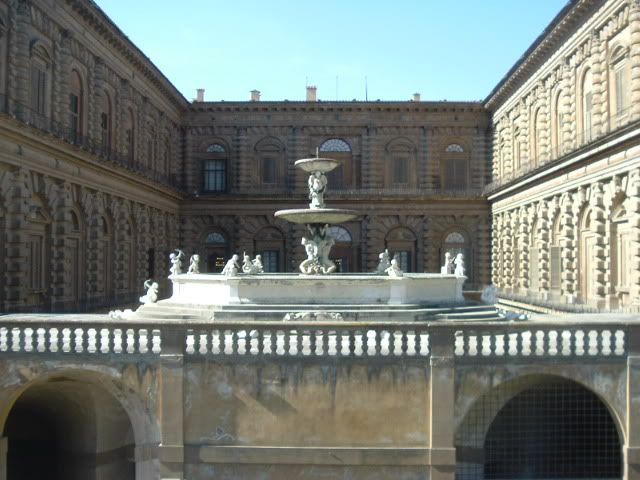
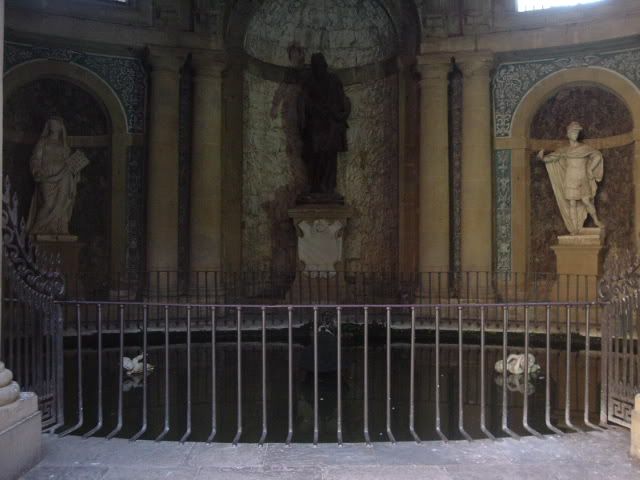
They had very nice gardens as well, known as the Boboli Gardens. This open-air former theater was the birthplace of opera.

They were built to roll on the hills, giving one pleasant views or cool valleys. Here's me looking overly excited with the house behind my shoulder.

Random bits of artwork fill the gardens, such as this one of a partially reassembled ancient Roman colossus. Man, that thing would've been huge.
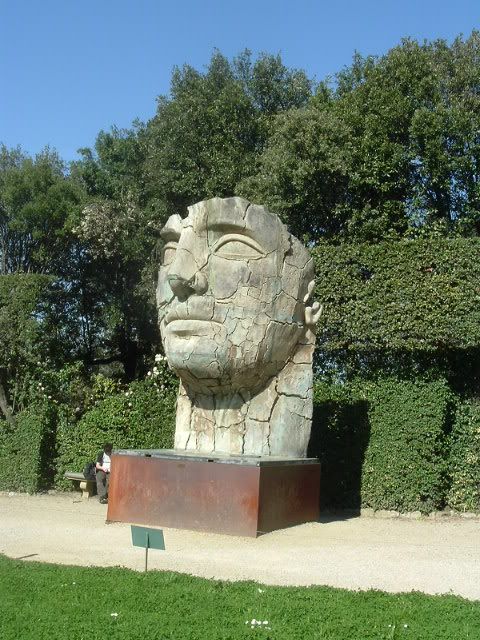
It was a long hike down to the bottom of the gardens.
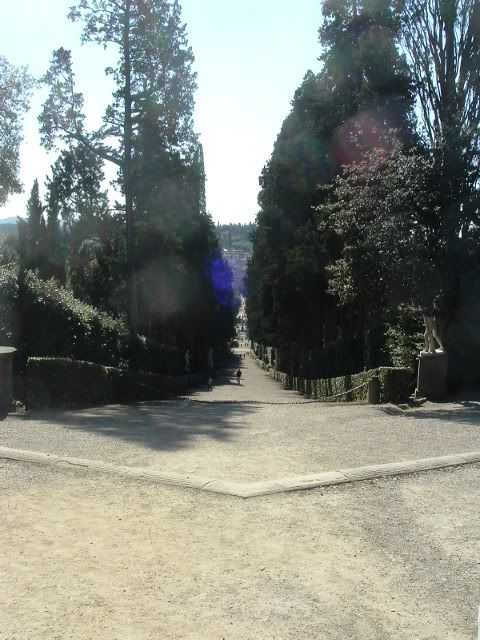
But the final grassy parks and fountains were worth it. They even had a few original Roman columns.

And from certain knolls along the gardens, you can spy on the palace next door and see what the neighbors are up to.
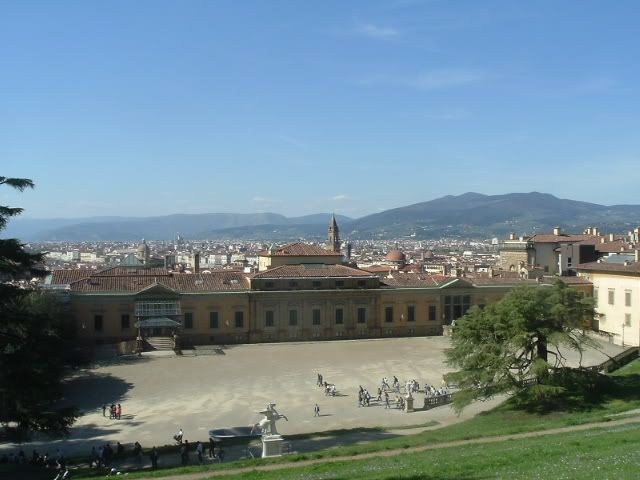
To cool off in the hot summers, they even had a grotto built. Some of Michelangelo's decendants worked on it. Although the artificial nature came together very well, I must say that ole Mad King Ludwig II in Bavaria had 'em beat with his personal Wagnerian grotto. But, even a mostly magnificent grotto's better than no grotto at all.
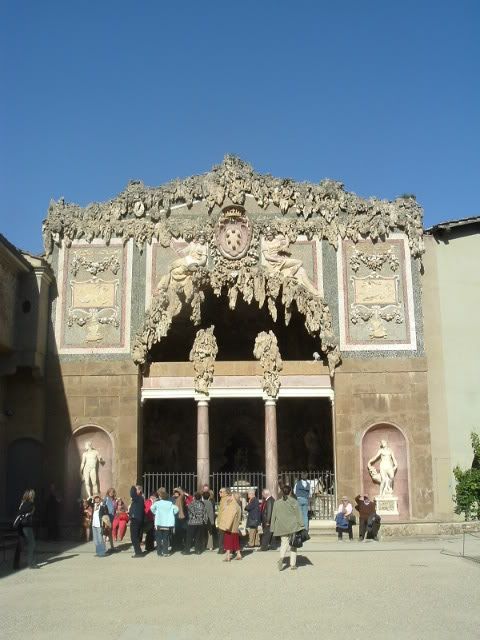
After that, the day was spent, and I headed back to the hostel. Along the way, I saw some more interesting sights of Florence, such as the police taking down a lady selling scarfs in the piazza and a guy getting ripped off by a street vendor, then challenging him to a fight, then backing off (which was a wise thing as the vendor's six buddies were also there). What a town.
For some reason or other, I had to switch rooms for the night, but it was fine as I suddenly had access to Italian TV. It was strange (well, duh, as it was all in Italian), but the strangest part seemed to be that the vast majority was cheesy little comedies. Thinking back, though, it seems to match the laid-back, laugh-aloud Italian psyche. What a culture.
Back to Jeff's Weblog




























































